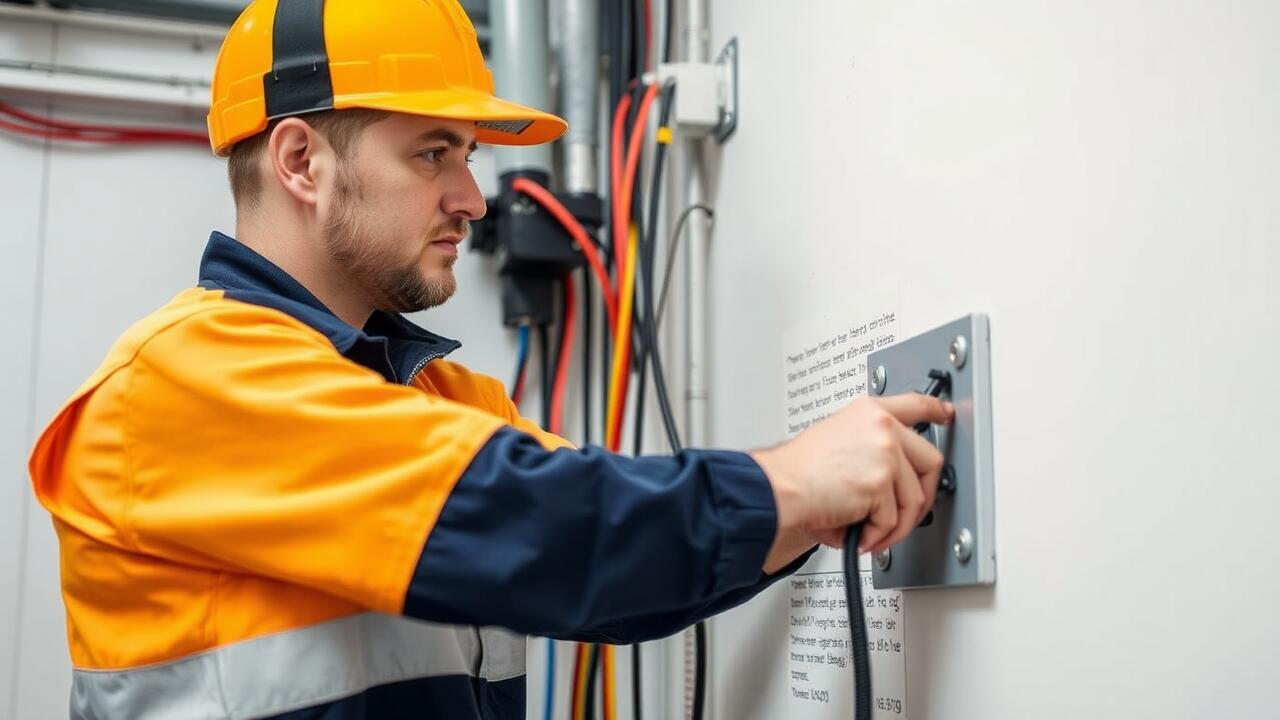
Testing for Ground Faults
Ground faults can pose serious risks in any electrical system. A ground fault occurs when electricity finds an unintended path to the ground, potentially leading to electrical shocks or fires. To identify ground faults, it is crucial to use a multimeter. Start by checking the voltage between the hot and ground terminals of the outlet. A reading of zero volts suggests a ground fault. If this occurs, it's advisable to seek professional help for immediate attention.
If you're unsure about performing the test yourself, consider searching for “Electrical Repairs near me.” Experts can efficiently diagnose and fix any ground fault issues, ensuring the safety and reliability of your electrical system. Taking action promptly not only protects your home but also helps prevent further damage to connected devices.
Recognizing Ground Fault Circuit Interrupters (GFCI)
Ground Fault Circuit Interrupters (GFCI) are designed to protect against electrical shocks occurring due to ground faults. These outlets can be easily recognized by their distinctive reset and test buttons, typically found on the front of the unit. GFCIs are often installed in areas where water is present, such as kitchens, bathrooms, and outdoor spaces, making them essential for safety in these higher-risk locations.
When assessing the functionality of a GFCI outlet, it is crucial to test it regularly. Pressing the "test" button should cause the outlet to trip, cutting off the power. If this does not happen, or if the outlet continues to trip without a clear reason, it may require immediate attention. Residents experiencing issues with GFCI outlets can search for "Electrical Repairs near me" to find qualified electricians who can diagnose and resolve any problems efficiently.
Checking Outlet Fit and Stability
When assessing the fit and stability of an electrical outlet, it’s important to check how securely the outlet is mounted in the wall. A snug fit means that the outlet is less likely to become loose over time. If you notice any gaps between the outlet and the wall, this can indicate that the screws are not tightened properly or that the outlet box itself is misaligned. Loose outlets can lead to exposed wiring and create potential safety hazards, so it’s crucial to address this issue promptly.
In addition to fit, functionality plays a key role in determining outlet stability. A reliable outlet should hold plugs firmly without resistance or excessive movement. If plugs fall out easily or seem to wobble, this can be a sign of wear or damage. For those experiencing issues, searching for “Electrical Repairs near me” can help find qualified professionals who can ensure that the outlets are safe and properly installed. Addressing these concerns not only improves household safety but also enhances the overall efficiency of your electrical system.
Signs of a Loose or Worn Outlet
A loose or worn outlet can create a range of problems that might not be immediately apparent. First, examine how securely the plug fits into the outlet. If it falls out easily or feels wobbly, that's a sign the outlet may be worn. Additionally, check if there’s any visible damage such as cracks or discoloration around the outlet. These can indicate overheating or other electrical issues, which may pose safety hazards.
Another indicator of a problematic outlet is inconsistent power supply. If devices plugged into the outlet don’t receive power consistently or if they draw less electricity than expected, it could be time for an inspection. Homeowners should prioritize safety and consider seeking assistance for Electrical Repairs near me, especially if they notice symptoms like sizzling sounds or burning smells. Regular assessments can help in identifying potential hazards and ensuring a safe electrical system.
Evaluating the Age of Electrical Outlets
Older electrical outlets can pose safety risks and may not fulfill modern electrical needs. Outlets manufactured more than 20 years ago often lack the necessary features to handle the demands of today’s appliances and electronics. Additionally, older wiring can degrade over time, increasing the likelihood of short circuits or electrical fires. Homeowners should assess the age of their outlets to determine if an upgrade is necessary.
If you suspect your outlets are outdated, it is wise to consult a professional for an evaluation. Regular electrical inspections can help identify potential issues before they escalate. Searching for "Electrical Repairs near me" can connect you with qualified electricians who can assess the condition of your outlets and recommend appropriate solutions. Keeping your outlets updated enhances safety and ensures optimal performance for your devices.
When to Replace Older Outlets
Older outlets can become a hazard if they show signs of wear or degradation. Typically, outlets that are over 20 years old may no longer meet current safety standards. If you notice cracks, discoloration, or any burning marks, these are clear indicators that replacement is necessary. Furthermore, outlets that frequently trip circuit breakers or are unable to maintain a secure connection with plugs should also be taken seriously.
It is essential to consider the overall electrical system in your home. If you have outdated outlets, they might not support the power demands of modern appliances. Regularly replacing older outlets not only enhances safety but also ensures optimal performance of your electrical devices. For anyone unsure about the condition of their electrical infrastructure, searching for "Electrical Repairs near me" can lead to finding professionals who can help evaluate and address potential issues effectively.
FAQS
What are the common signs that an electrical outlet may be bad?
Common signs of a bad outlet include burning smells, charring around the outlet, difficulty in plugging in devices, or outlets that feel warm to the touch.
How can I test for ground faults in my outlets?
You can test for ground faults by using a multimeter to check for correct voltage and continuity, or by pressing the "Test" button on a GFCI outlet to see if it trips correctly.
What is a Ground Fault Circuit Interrupter (GFCI) and why is it important?
A GFCI is a safety device that cuts off electricity when it detects an imbalance in electrical current, helping to prevent electrical shocks, particularly in wet areas like kitchens and bathrooms.
How do I check if an outlet is loose or worn?
You can check an outlet for looseness by gently pulling on the plug when it is inserted. If it comes out easily, or if the outlet itself moves when you push or pull on it, it may be loose or worn.
When should I consider replacing older electrical outlets?
You should consider replacing older outlets if they are over 20 years old, show signs of wear and tear, or if they do not meet current safety standards, especially if they are not GFCI outlets in wet areas.


